The tree-lined avenues
The urban green: the trees for the avenues of the cities
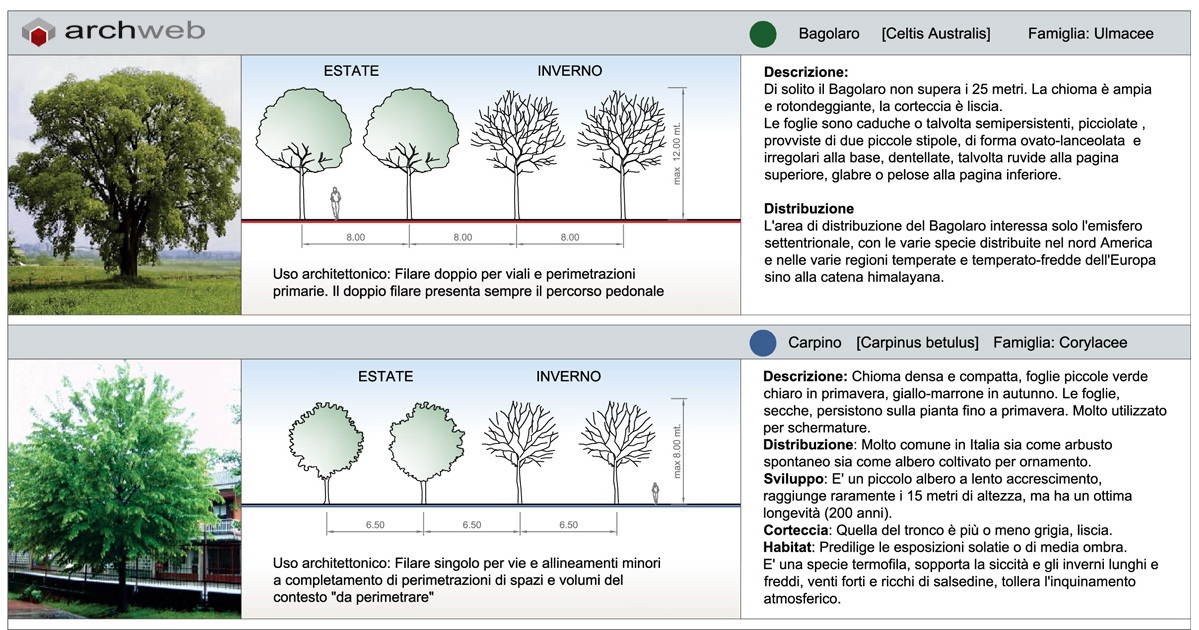
The graphic elaborate is a useful reference for the representation of various tree species which, due to their natural characteristics, guarantee an adequate environmental and formal response in relation to the arrangement, type and size. The single essence is considered, arranged in a row or in a group, an architectural element with its own elevation which, depending on its specific arrangement, can assume different formal values. These potentialities offered by the green guarantee, depending on the situation considered, a closing effect (visual screening or windbreak), perspective openings, directionality, geometric centrality, etc.
Click on the image to enlarge
The reference colors of the species are associated with the “Green as a structure” plan
Thesis by Cicalini Marina and Perissi Federica
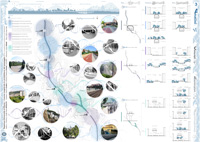
Faculty of Architecture Valle Giulia – Sapienza of Rome
Supervisor: Prof. Arch. Achille Maria Ippolito
E mail: [email protected] / [email protected]
“DNA Linear park: Design of the linear park along the FM-3 railway track from Balduina to San Pietro”
Click on the image to download the abacus – Thesis Cicalini Marina and Perissi Federica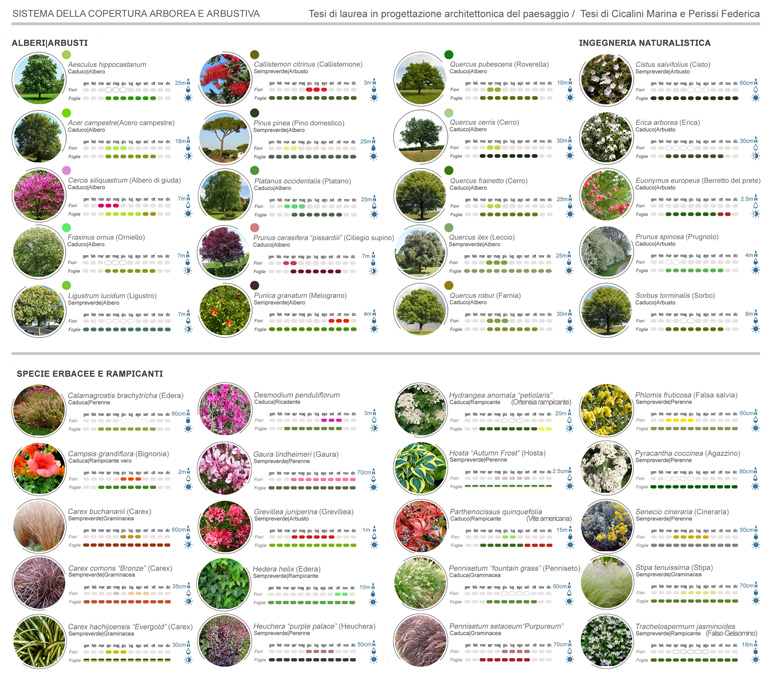
To view the tables of the thesis in architectural landscape design:
Thesis by Cicalini Marina and Perissi Federica
Thesis by Simone Catalani
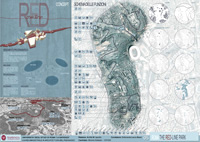
Faculty of Architecture Valle Giulia
Sapienza of Rome
Supervisor: Prof. Arch. Achille Maria Ippolito
Co-Supervisor: PhD student Laura Alessi
Email: [email protected]
Redevelopment of the Monte Mario Linear Park: The RED-Line Park
Click on the image to download the factsheets from Simone Catalani thesis
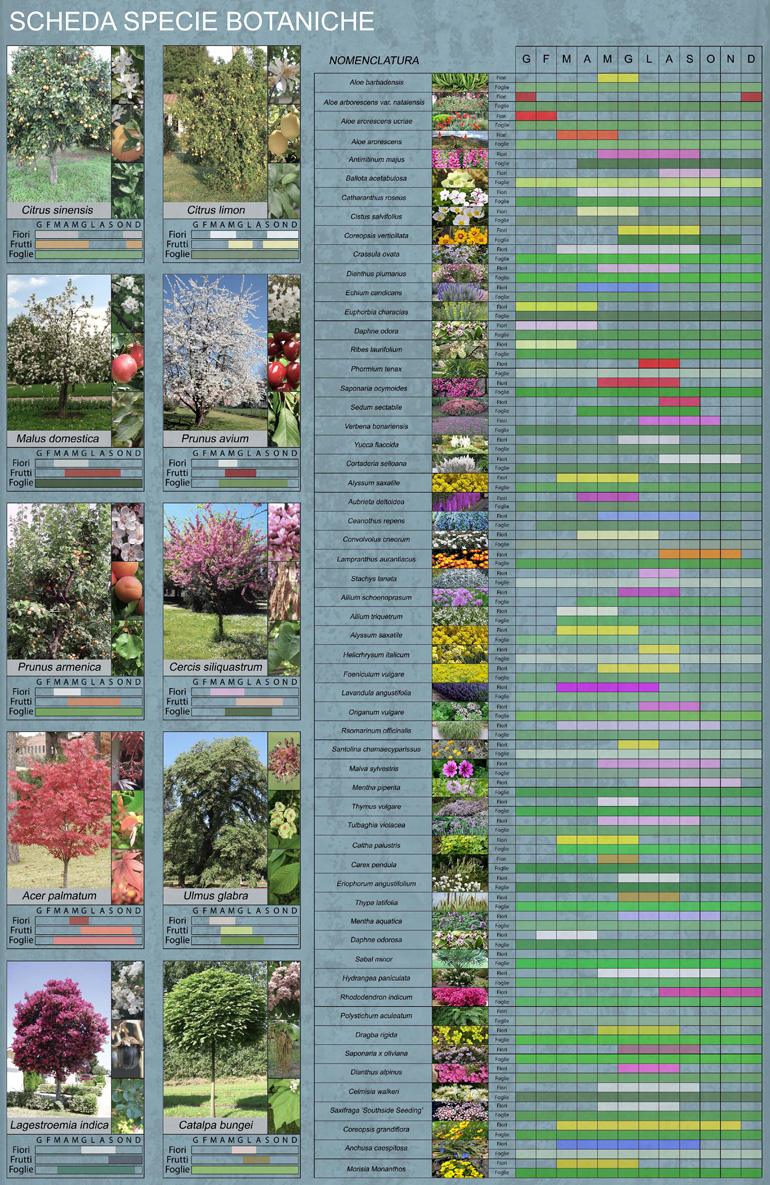
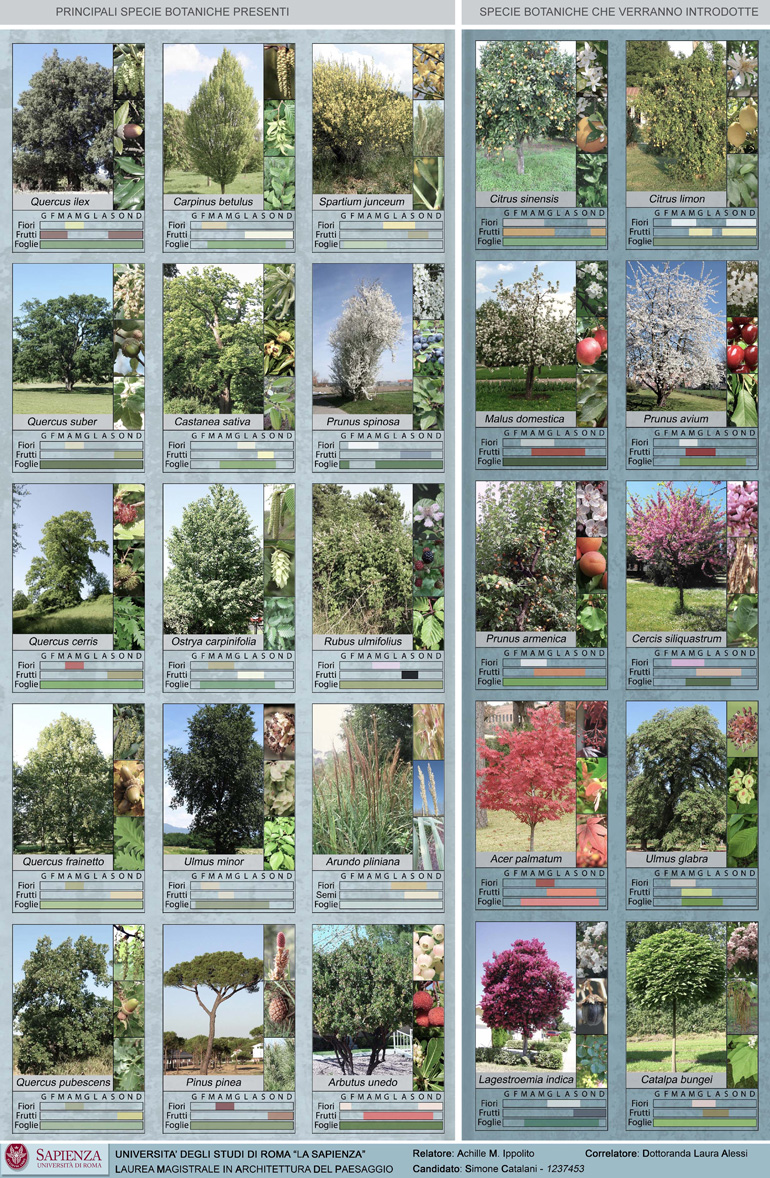
To view the tables of the thesis in architectural landscape design: Thesis by Simone Catalani
We publish the interesting proposal “Valtiberina Project“, an environmental mitigation intervention.
The international route of the European road E45, which winds for 4920 km from the Sicilian city of Gela to the south and the Norwegian city of Karesuvanto to the north, placing a permanent perceptual sign in the territory. The road belt that runs from the municipality of Umbertide through the municipalities of Città di Castello and Sansepolcro up to the municipality of Pieve Santo Stefano crosses the valley floor with a predominantly flat configuration, skirting rural panoramas of undoubted landscape interest.
The wound inflicted on the territory appears evident as a deep furrow between the green surfaces of the Umbrian-Tuscan countryside, caused by the total absence over the years of the planning of specific environmental legislation.
There are three main negative aspects of the current system:
– Inadequacy of landscape insertion which is expressed in a total lack of enhancement of the urbanization and territorial peculiarities present;
– Atmospheric pollution: the intense traffic of the major artery examined produces negative effects on air quality, evidently up to a distance of 50-120 meters from the roadside.
– Noise pollution: a further element of degradation of the territory with evident repercussions on the populations adjacent to the infrastructural route and on the local faunal complex. The average sound pressure category found today on the track goes to values between 55 and 60 dB
HYPOTHESIS OF INTERVENTION:
To make the weight of a structure like the E45 sustainable, which has a heavy impact on the surrounding area, mitigation measures are necessary through the use of greenery as a common language for the correct landscape insertion of the linear infrastructure and the improvement of pollution. both acoustic and atmospheric.
AS?
- Planting in the buffer zones adjacent to the road layout, starting from a minimum distance of 6 meters (Regulation for the implementation of Presidential Decree 610/96)
- Arboreal groupings to eliminate the distance between the woodlands interrupted by the original artery system.
- Use of tree bands in correspondence with residential areas adjacent to the roadway
BENEFITS
- Reduction of mini hydrogeological disasters resulting from the washout of the land of the side slopes and improvement of traffic noise pollution.
- Windbreak effect and improvement of atmospheric quality by absorption of pollutants.
- The species that can be used for this type of environmental mitigation are mainly attributable to the families of the genus quercus, tilia, fraxinus, populus, morus which are easily composable in bands and / or rows and do not grow particularly vigorously so as to avoid frequent pruning.
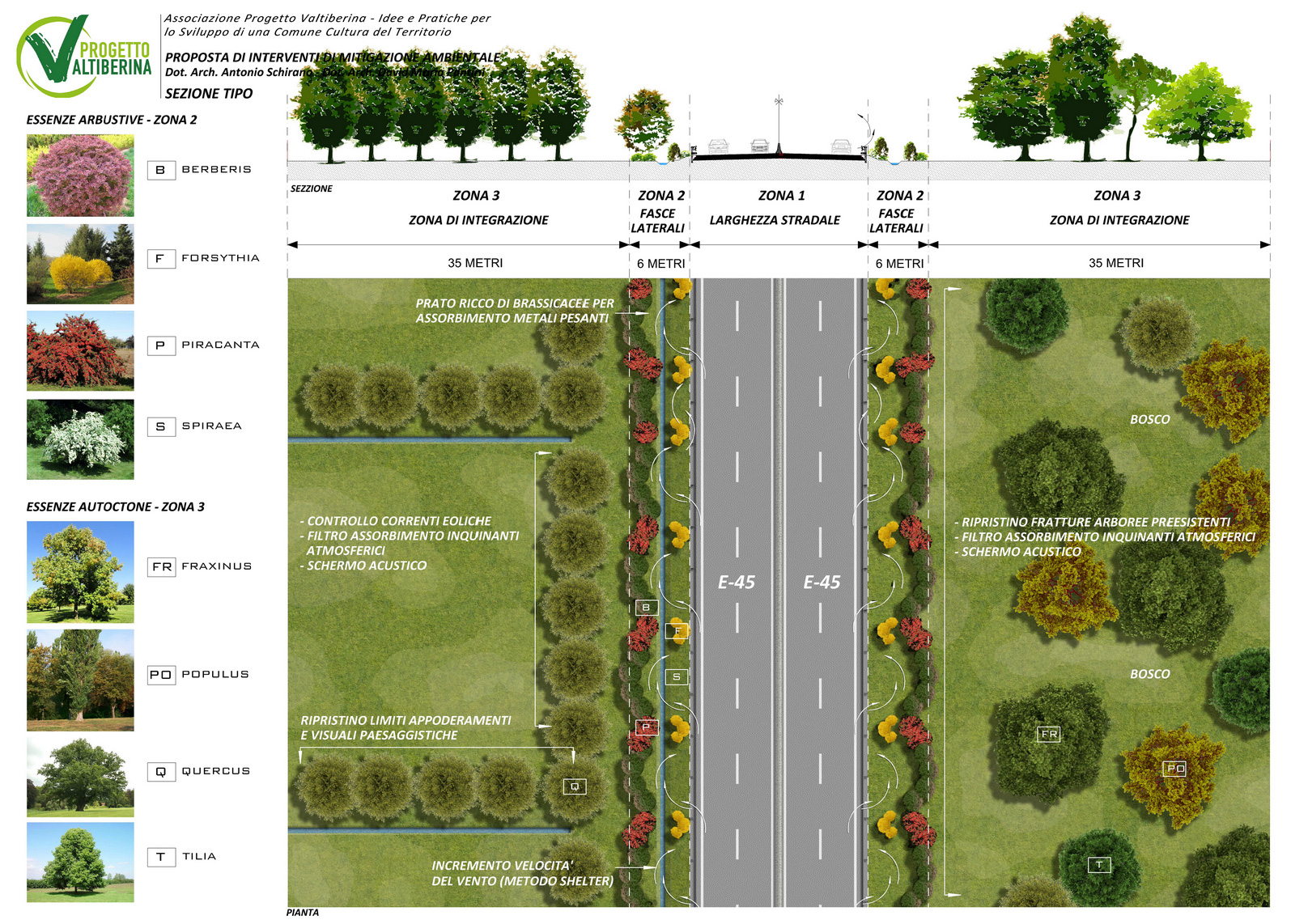
Floorplan and cross section on the highway
Source: http://www.progettovaltiberina.it
































































